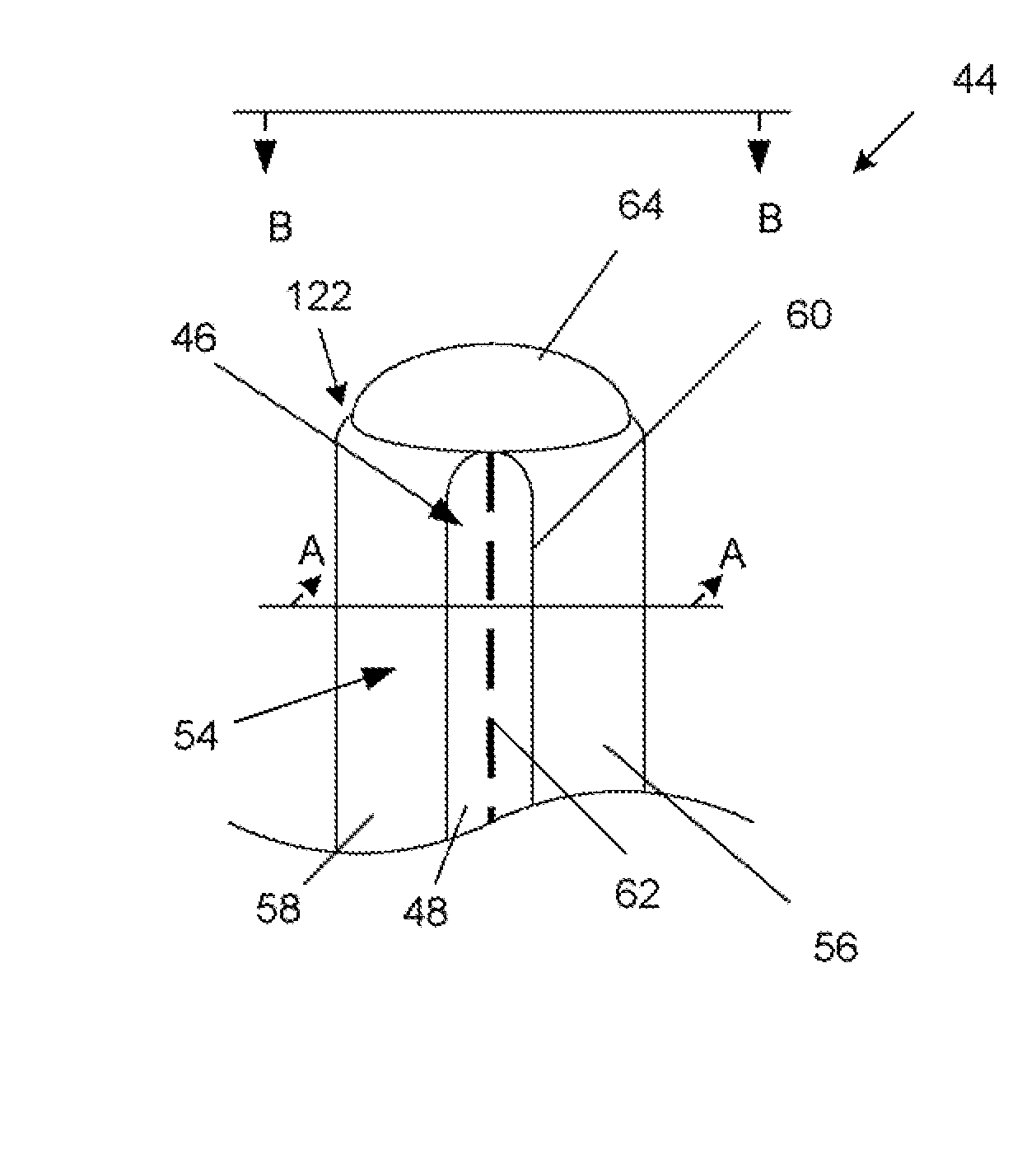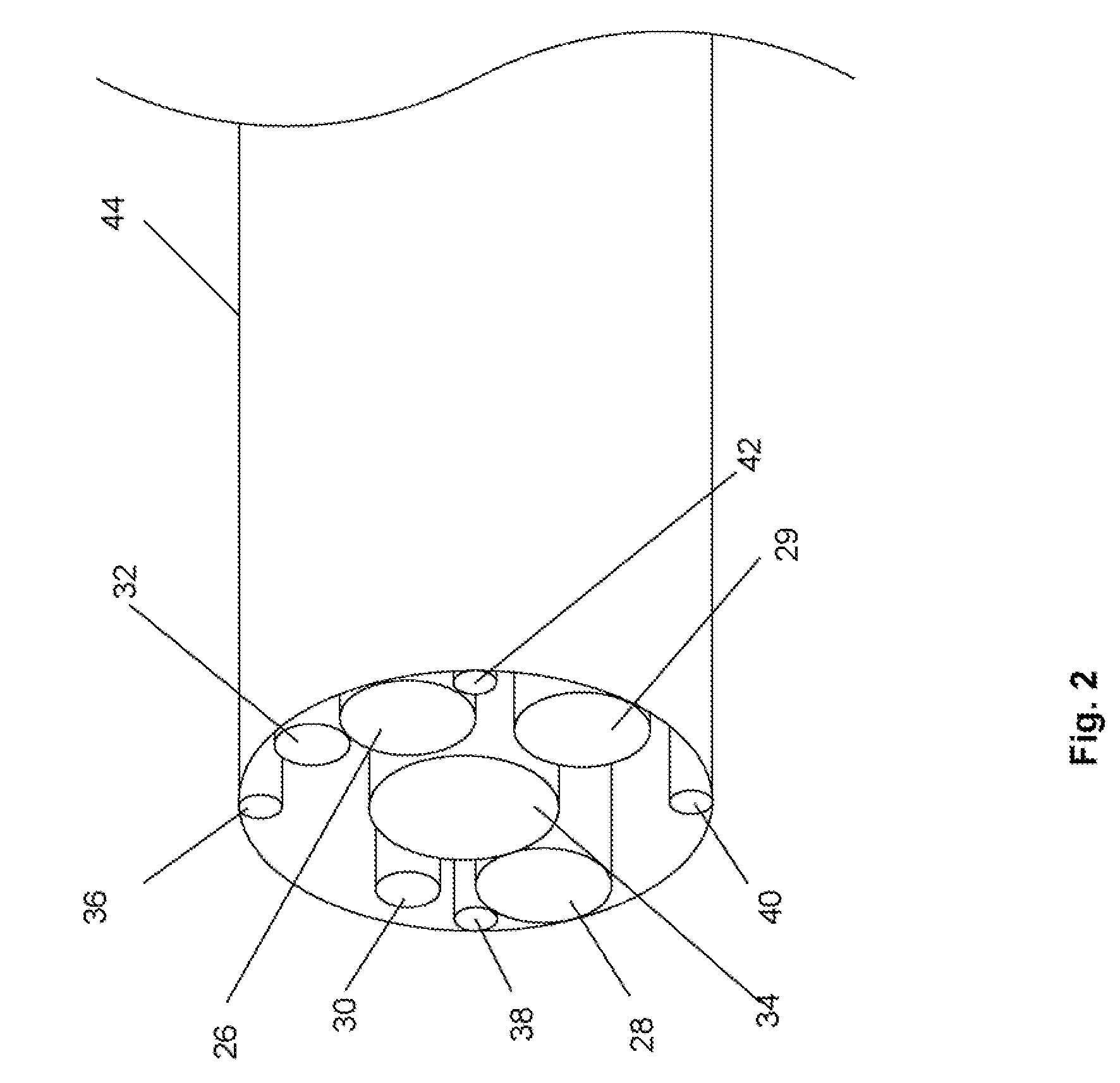However, as disposable and other lower-cost
colonoscopes are developed, these articulatable sections are no longer practical.
Their high part count creates total costs that are exorbitant for a lower cost, disposable device.
The pivot pins can also fall out, which can create a patient danger.
Their design geometries, while suited for long life, high cost, high strength metals elements, don't readily suit themselves to the design goals of lower-cost and more readily
mass-produced parts.
Navigating the long, small
diameter colonoscope shaft in compression through the colon—a circuitous
route with highly irregular
anatomy—can be very difficult.
Even with the achievement of such a practice
milestone, the
cecum is often not reached, thereby denying the patient the potential for a full diagnosis.
During
colonoscopy, significant patient pain can result.
The primary cause of pain is thought to be stretching and gross
distortion of the mesocolon (the mesentery that attaches the colon to other internal organs).
While attempting to advance the tip by pushing on the scope, often all that occurs is that intermediate locations are significantly stretched and grossly distorted.
Anesthesia delivery results in the direct cost of the
anesthesia, the cost to professionally administer, the costs associated with the
capital equipment and its facility layouts, and the costs associated with longer
procedure time (e.g., prep,
anesthesia administration, post-procedure monitoring, and the need to have someone else drive the patient home).
Cleaning also creates significant wear-and-tear of the device, which can lead to the need for more servicing.
However, multiple challenges exist for everting systems.
One typical challenge is the differential speed between the center lumen and the tip.
This can make it difficult to try to solve the 2:1 problem in a typical everting tube by sliding elements in the inner
diameter or
central region.
This 2:1 advancement issue and the pressure clamping can make it difficult to locate traditional colonoscope tip elements at the everting tip's
leading edge.
Given that the tube is often long and pressurized, it therefore often precludes the ability to create a functioning center working channel.
Another issue is internal drag.
Material (e.g., tube wall) fed to the tip can cause increased
capstan drag, for example the overall
system advance force can be retarded to the point of stopping extension.
Monolithic materials have proven insufficient at providing the variety of requisite specifications.
It can be difficult to create a
system that is of adequately low stiffness.
Larger diameters create higher propulsive forces, but they also do not typically readily conform to the colon in a lumen-centric manner and can be overly stiff.
This is
time consuming and creates an undesirably non-continuous and geometrically interrupted procedure.
It is also very difficult to create ‘correct’ undesirable
relative motion to a deflated structure that essentially is no longer a structure.
However, it has yet to be commercialized, it is very complicated, creates an undesirably larger
diameter instrument, has
lubrication leakage issues, and breaks down at longer advance lengths.
Additionally, colonoscopic devices have found it notably challenging to create methods to appropriately navigate through torturous geometries, particularly without undue colon wall stresses and subsequent mesocolon stretch.
Steering
kinematics are critical and have been an ongoing challenge—certainly for existing
colonoscopes (which result in ‘looping’), but also to more effective next-generation devices.
When a propulsion tube section's
leading edge then has a steering section more distal, with typically a camera, lighting source, and working channel exit at the tip, the steering is less than effective when going around a corner: A situation is created in which the tip is retroflexed and is pointing in one desired direction of advance, but the
system's advance is in an exactly opposite direction.
In a
colonoscopy, this wall interaction is undesirable—it creates unnecessary
wall stress and trauma, and can be a significant contributor to gross wall
distortion, known as looping.
 Login to View More
Login to View More  Login to View More
Login to View More 


